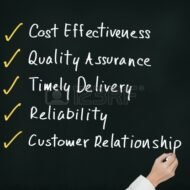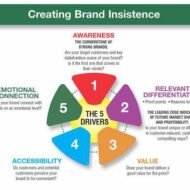Posted by Managementguru in Business Management, How To, How to make money online, Marketing, Sales, Social Media, Strategy
on Jun 19th, 2019 | 0 comments

Why is it sheer brilliance to invest in an e-commerce store Picture Courtesy : Pixels.com From Walmart and Target, the world has moved on to Amazon, eBay and Alibaba. As the Internet conquers the world, people are ditching brick and mortar and are moving towards shopping on a click. During 2018, people shopped worth $2.86 trillion on the web, and this figure is expected to reach $4.8 trillion by 2021, which is huge. Get your 5 day 4 Night Mexico Vacation (a $1,720 value) for anyone who signs up for the Travel Agent program for $199 Brick-and-mortar, on the other hand, is losing its charm. This can be seen from the fact that Circuit City, Kmart and Radio Shack have all filed for bankruptcy. Moreover, whatever is left of the brick-and-mortar is also digitally influenced, which is why they are going mobile. JD.com, the world’s second-largest e-commerce business has partnered with Walmart to create a new retail concept, 7Fresh. At 7Fresh, you need an app installed on your phone because you need it to scan the products and make the payment. Given that the entire world is shifting towards e-commerce, it only makes sense to jump on the e-commerce bandwagon if you are looking to invest in a business. If you are not yet convinced why e-commerce is a good investment opportunity, then here are some reasons that might help. 1. The world is shopping online The most convincing reason is perhaps that the world is now shifting towards online shopping. People now have a lot of options in terms of variety and pricing at the click of the button. Forecasts show that by 2021, around 2.14 billion people are expected to shop online, up from 1.66 billion in 2016. 2. Easier to build Prada, Gucci, Louis Vuitton and all our favorite brands have been there in the market for many years. They have invested a lot of time and money to be where they are today. With e-commerce, however, the process is quicker; with the minimal investment, you can grow by leaps and bounds. The online retail giants are the living proof that the online world is full of possibilities. Amazon started as a mere bookseller, and today it has more than 12 million products. Moreover, e-commerce tools today are a lot better and less costly. The selling platforms and marketing tools have made it easier for an inexperienced person to start a business online. The only hurdle that you may face is deciding the product that you have to sell and whether you have to sell a range of products like Amazon or focus on a single category. Selling everything and anything may seem appealing. However, it comes with its own set of problems. Amazon did not get there in a day. Hence, we recommend you focus on a narrower range of products. 3. Location doesn’t matter The biggest drawback of brick and mortar is that you need a good location to generate sales. Your store has to be located where your target market lives. If you are selling a premium product in a middle-class area, chances are your store will close down in a few days. Other than that, you have to keep several factors in mind, such as parking issues. With e-commerce, you do not need to worry about all of this. You can sell to anybody who wants your product. Moreover, it is easier to establish your sales internationally, as well. 4. Easy to keep a tab on customers With an e-commerce store, you can easily see what your customers like and don’t like so you can update your offerings accordingly. You can see...

Posted by Managementguru in Business Management, Decision Making, Marketing, Strategy
on Jul 7th, 2014 | 0 comments

What is Portfolio Analysis ? Portfolio Planning is best advised for diversified companies than the more product coherent ones. Portfolio analysis plays a vital role in planning and implementation of various #strategic business units of the organization as a whole. Portfolio planning recognizes that diversified companies are a collection of businesses, each of which makes a distinct contribution to the overall corporate performance and which should be managed accordingly. Companies dealing with a wide #product range and divisions are expected to redefine their strategies for each of the SBU’s or Strategic Business Units. Then they classify these units on a portfolio grid according to the competitive position and attractiveness of a particular product market. What are strategic business units? A strategic business unit is a fully functional and discrete unit of the business that builds its own strategic vision and direction. Within large companies there are smaller specialized divisions that work towards specific projects and #objectives. The strategic business unit, often referred to as an SBU, remains an important element of the company and is accountable to their head office about their operational status. Typically they will operate as an independent organization with a specific focus on target markets and are large enough to maintain internal divisions such as finance, HR, and so forth. Being Strategic: Thinking and Acting with Impact Types of Portfolio Planning: Analytical Planning: Planning is only at the initial level where traditional administrative tools are used. Process Planning: Here planning is a central part of the ongoing #management process and strategic mission is explicit in activities. Advantages of Portfolio Planning: It promotes substantial improvement in the quality of strategies formulated both at the business and corporate levels.It provides a guideline for adopting their overall management process to the needs of each business.It provides selective #resource allocation to the various SBUs.It furnishes companies with a greatly improved capacity for strategic control when portfolio planning is applied intelligently and with attention to its limitations and problems. Since the road to portfolio planning is a long one, companies often face difficulties trying to implement it and cannot realize the full potential of the approach. In implementing portfolio planning, there is a tendency for the focus to be shifted towards #capital investment rather than resource allocation. #Resource Development is the key: Become a Product Manager | Learn the Skills & Get the Job Implementing Corporate Level and Business Level Strategies: Corporate level #strategy is concerned with the strategic decisions a business makes that affect the entire organization. Financial performance, mergers and acquisitions, #human resource management and the allocation of resources are considered part of corporate level strategy.Business level strategy focuses on how to compete in a particular product/market segment or industry. Competitive advantages and distinctive competencies thus become dominant strategic concerns at this level.At the functional level, the primary focus of strategy is efficiency. Boston Consulting Group Matrix: The business policy portfolio models are most popular and useful to understand the firm’s strategic concerns and choices. They define the firm’s scope or domain by highlighting the inter-relatedness of the diverse factors, such as: #Market Growth#Market ShareCash and Cash flow patternsCapital Intensity#Product Maturity BCG Matrix #Stars– Star category represents high growth and high market share– High investments are needed to maintain the share– High cash flow outward movement in this category to maintain status– Usually in the end of the ‘Growth’ #Product Life Cycle stage– Represents emerging and good business for the company, though they need alot of attention and priority #Cash Cows– Represents low growth, high market share– This is the best quadrant of the portfolio as the company basically enjoy the ‘milk’ of success– This is where the...

Posted by Managementguru in Accounting, Decision Making, Management Accounting, Project Management
on Apr 1st, 2014 | 0 comments

ACCOUNTING AND DECISION MAKING – IDENTIFYING THE PROBLEM SITUATION Learn accounting and finance basics so you can effectively analyze business data to make key management decisions. Business owners are faced with countless decisions every business day. Managerial accounting information provides data-driven input to these decisions, which can improve decision-making over the long term. Fig 1.1- ACCOUNTING INFORMATION FOR A SINGLE PRODUCT The above illustration clearly depicts that there has been a loss of Rs.100 in one year’s time for this particular product. The reason can be attributed to the increase in the “cost of goods” whereas other expenses have remained the same in both the years. For a single product manufactured, the problem is identifiable and solvable. But when the organization is producing a range of products, you need to apply some accounting technique by which the product losing money is identified and suitable measures are taken to cut down the escalating cost. Fig 1.2- Accouning Information for a Product Range The above illustration compares and contrasts the relationship of three products a company manufactures. It is seen that products P1 and P2 are doing well. Though the cost of sales has gone up for P1 and P2, the sales volume has also increased thus increasing the gross profit over the period of time. Here the product that has to be dealt with is P3 whose sales volume has drastically gone down, yet with the same cost of sales. When there is an increase in cost of sales, two things have to be considered. Identifying the problem-product Either cut down the production cost or increase the selling-price if the product has a real demand in the market. Uses of Accounting Data: Accounting information helps the management to arrive at make or buy decisions, to outsource production of certain components to cut down or control costs, to expand the production, to increase the sales volume or to downsize their project capacity. Techniques like Break-Even Analysis, Costing and Budgeting aid in going for the right production-mix, marketing-mix and sales target plans for the respective financial years. Aggregate Planning: As we all know planning is the key to the future and financial planning has to be given utmost importance for a production process. Aggregate planning involves translating long-term forecasted demand into specific production rates and the corresponding labor requirements for the intermediate term. It takes into consideration a period of 6 to 18 months, breaking it into work modules weekly or monthly and planning for the specific period in terms of men, material and...

Posted by Managementguru in Business Management, Marketing, Principles of Management
on Mar 3rd, 2014 | 0 comments

Customer Centric or Product Centric Customer centric: refers to the orientation of a company to the needs and behaviors of its customers. Product centric: refers to the orientation of a company towards manufacturing and improving the product line. All products that enter the market are not given the kind of welcome which only certain products are able to enjoy. Why is that only few products are top notch and others average performers? The answer is very simple, you need to be customer centric rather focusing on improving your product and its range. What is the fun in making products that go bland over a period of time? Creating an appealing product does not suffice the requirements of the consumers. Understanding the consumer, his needs and preferences makes you a good marketer. “What people want to buy and what you want people to buy are entirely two different entities.” Customer Wanton and Preferences Marketing is a concept that talks about creating a favorable environment or identifying a niche where you can sell your products comfortably or where the products can sell themselves provided the focus is on the target customer. What companies do now in the name of marketing is nothing but product promotion that exhausts huge chunk of money from the management’s treasury. Business schools have a great role to play in idealizing these concepts for the better understanding of management graduates, make them deliver the right choice of action in real time environment. Marketing starts right from developing a prospective business idea into a concrete business plan followed by branding and promotions. But the product base has to be built upon customer wanton and preferences. Indigenous Products The soft drink “Bovonto” is very popular and a preferred drink in south of Tamilnadu, India and the manufacturers have their plants at various places in Tamilnadu. Although not a big name in the international market, it is a direct competitor for Coke and Pepsi in the southern regions of Tamilnadu. The grape vine is that the product is a perfect “market fit”. To our amusement and amazement the product has communicated well with the market place through taste and quality. Here is the unerring message, ‘Let the product speak for itself’. Indigenous products always gain instant recognition as they connect well with the local people emotionally. If people of each and every country vows only to buy indigenous products, many MNC’s would be out of business and filing for bankruptcy. Such is the power of the market and people who are the owners of the market. What is that ‘X’ factor that makes your product different and unique Let’s look at it from another perspective. Incidentally you happen to develop a great product and you want to market the product. This situation calls for patenting the product and again it can be made market centric by finding the right market segment for the product and promoting it in such a way that the product content appeals to the market. Tell the masses how your product can solve specific problems through its unique content. What is that ‘X’ factor that makes your product different and unique as well is what you have to communicate to the people whom you are targeting. Facebook has revolutionized the internet marketplace by offering simple and user friendly interface and a sophisticated niche for each and every individual who wants to make his/ her presence felt. A good business plan is one which incorporates the best of ideas from all spheres of the company, as marketing is not a separate entity and promotions call for huge investments. Many companies fail to understand the basis of market success which...

Posted by Managementguru in Marketing, Strategy
on Feb 17th, 2014 | 0 comments

Branding strategies What is Branding? What is a branding strategy? The process involved in creating a unique name and image for a product in the consumers’ mind, mainly through advertising campaigns. Brand = Trust What is the meaning of Brand Identity? A brand name adds a unique value proposition to a company offering differentiated products across a wide spectrum. It is an important component of a firm’s corporate identity. The logo that represents a brand is just not a symbol but is a source of commitment to the customers. It implies the benefits or added values that the company offers to satisfy its customers. Logos are a way to reach your customers in the initial stages when your company is in the offing. After a certain period of time, it becomes an icon that represents your company’s efficacy and achievement in terms of quality, price, customer service etc. Nowadays there is a pressing need for corporate firms to target both domestic and international markets. They have to create and establish local as well as global brand identity. A brand name tells the customer what to expect and it personifies your organization. Why in the first place a company needs a brand identity? See, it proves to be the most vital part of your marketing plan. How do you expect to reach your customers and convince them that you are there in the market to offer a superior product range than that of your rivals? You have to keep in constant touch with your customers and this is where a brand name comes in as a source of strength, as a promotional tool to speak for your product’s credibility and quality. You have to ask yourself the following questions while planning to develop a branding strategy: Does your brand create a feeling of trust in the minds of the customers? Does your brand deliver the benefits that it has promised to? Does your brand connect with the customers well at an emotional level? Is everybody including your competitors are aware of your brand? http://www.entrepreneur.com/article/272386 Strategic equations for Success You need to revitalize your think tank by including strategies that will hit the target on the right note. One way is to re-launch your existing products under new brand name to give a fresh lease of life to the products as well as attract new customers Another way is to introduce new product range, where the existing brand may not be suitable for the new product line Making the products more attractive and appealing by making small modifications in packing Also your brand can include a new range of similar products to be offered from your end. The brand strategy gives momentum to your business and aligns the activities of your organization towards successfully accomplishing the corporate objectives. It should be always remembered that branding is the only way to develop loyal...










